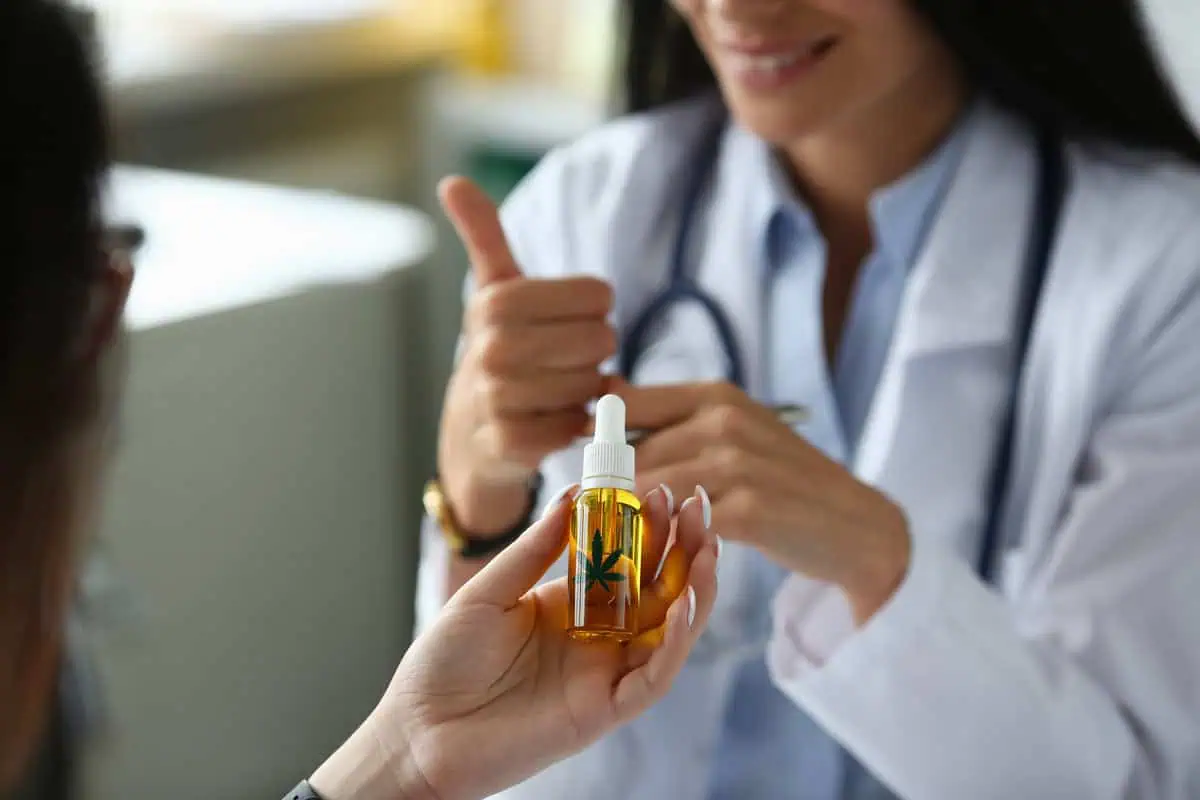In recent years, the therapeutic potential of medical cannabis has sparked a growing interest, fueled by anecdotal reports and scientific studies indicating its effectiveness in treating various medical conditions. This growing curiosity necessitates a comprehensive examination of the topic to fully grasp the plant’s healing capabilities and the broader implications surrounding its use, considering its controversial nature. By thoroughly exploring, we can gain a deeper understanding of the potential advantages and risks associated with medical cannabis, leading to more informed discussions and decision-making in healthcare.
Understanding the Active Compounds in Cannabis
Cannabis contains a complex mix of chemical compounds, known as cannabinoids, that are responsible for its therapeutic effects. The two most well-known and studied cannabinoids found in cannabis are delta-9-tetrahydrocannabinol (THC) and cannabidiol (CBD).
THC is the predominant psychoactive component in cannabis that causes the “high” experience associated with marijuana use. However, THC also possesses various therapeutic properties, including pain relief, muscle relaxation, appetite stimulation, and anti-nausea effects.
On the other hand, CBD is a non-psychoactive compound that has gained significant attention for its potential medical benefits. CBD is known to have anti-inflammatory, analgesic, anxiolytic (anti-anxiety), and neuroprotective properties. It is thought to moderate THC’s effects, lowering intoxicating effects while offering a more balanced therapeutic experience.
Apart from THC and CBD, cannabis contains several other cannabinoids, such as cannabigerol (CBG), cannabinol (CBN), and cannabichromene (CBC), each with its unique properties and potential therapeutic applications. Additionally, cannabis contains aromatic compounds called terpenes, which contribute to the plant’s distinctive aroma and may have their own therapeutic effects.
Medical Conditions and Potential Benefits
Medical cannabis has shown potential in treating a wide range of medical problems. While research is still ongoing, there is growing evidence supporting its potential therapeutic benefits. Here are some of the medical conditions for which medical cannabis has shown promise:
- Chronic Pain: Medical cannabis is well-known for its analgesic effects, which provide relief for people suffering from chronic pain illnesses such as neuropathic pain, arthritis, fibromyalgia, and multiple sclerosis. Cannabis cannabinoids interact with the body’s endocannabinoid system, which regulates pain perception.
- Neurological Disorders: Medical cannabis has demonstrated potential benefits in managing neurological disorders such as epilepsy, Parkinson’s disease, and multiple sclerosis. CBD, in particular, has shown anticonvulsant properties and is approved for the treatment of certain forms of epilepsy.
- Mental Health Conditions: Medical cannabis has been considered an option for therapy for mental health problems such as anxiety, depression, PTSD, and possibly schizophrenia. THC may have mood-elevating effects, whereas CBD has shown promise in decreasing anxiety and enhancing sleep quality.
- Cancer-Related Symptoms: Medical cannabis has been used to alleviate symptoms associated with cancer and its treatments, including nausea and vomiting induced by chemotherapy, loss of appetite, pain, and sleep disturbances.
- Inflammatory Conditions: Cannabis has anti-inflammatory properties and may be beneficial in managing conditions such as rheumatoid arthritis, Crohn’s disease, and ulcerative colitis.
- Neurodegenerative Diseases: According to a preliminary study, medical cannabis may have neuroprotective properties and may halt the progression of neurodegenerative disorders, including Alzheimer’s and Huntington’s disease.
Nevertheless, the use of medical cannabis should always be done under the guidance of a healthcare professional experienced in cannabis therapeutics.
Methods of Consumption
Medical cannabis can be consumed through various methods, each offering different onset times and duration of effects. Here are some common methods of consumption:
- Inhalation: It involves smoking dried cannabis flowers or using vaporizers to heat the cannabis and inhale the vapor. This method allows for rapid onset of effects, usually within minutes, making it suitable for individuals seeking immediate relief. Inhalation is commonly preferred by those managing acute symptoms or needing precise control over their dosage.
- Oral Consumption: Consumption involves ingesting cannabis-infused products, such as capsules, oils, edibles, or beverages. When consumed orally, the effects typically take longer to manifest, usually within 30 minutes to two hours, as cannabis is metabolized in the digestive system, and the duration of effects is generally longer than inhalation. However, depending on circumstances such as metabolism and the amount of food in the stomach, the onset and duration of effects can differ.
- Topical Application: Topical products infused with cannabis extracts are designed for localized relief and are applied directly to the skin. These products, such as creams, lotions, and balms, are often used to alleviate pain, inflammation, and skin conditions. Topical application provides targeted relief without the psychoactive effects commonly associated with other consumption methods.
- Sublingual Administration: Sublingual administration involves placing cannabis tinctures or oils under the tongue, allowing direct absorption into the bloodstream through the mucous membranes. This method offers faster onset of effects than oral consumption, typically within 15-30 minutes. Sublingual administration provides a discreet and convenient option for precise dosing.
- Rectal Suppositories: Although less common, rectal suppositories are an alternative method of cannabis administration. The suppositories are inserted into the rectum, where the cannabinoids are absorbed into the bloodstream. This method may be used when other forms of consumption are not feasible or when individuals require systemic effects without the potential irritation associated with inhalation or ingestion.
It is important to consult with a healthcare professional or a knowledgeable cannabis specialist to determine the most suitable method of consumption based on individual needs, desired effects, and medical conditions.
Legal Considerations
Legal considerations regarding medical cannabis vary depending on the country, state, or jurisdiction in which one resides. In order to guarantee compliance with applicable laws and regulations, it is crucial to understand the legal framework governing medical cannabis. Here are some general points to consider:
- Legal Status: Medical cannabis laws differ around the world. Some countries and states have legalized medical cannabis, allowing patients to access it with a prescription or recommendation from a healthcare professional. However, it may still be illegal or heavily restricted in other jurisdictions. Familiarize yourself with the laws in your specific region to determine the legal status of medical cannabis.
- Prescription and Medical Documentation: In regions where medical cannabis is legal, obtaining a prescription or medical documentation from a qualified healthcare professional may be required. This documentation typically verifies the medical condition for which medical cannabis is being recommended and serves as a legal basis for accessing medical cannabis products.
- Licensed Dispensaries: In legal jurisdictions, medical cannabis is often distributed through licensed dispensaries or pharmacies. These establishments are authorized to provide medical cannabis products to eligible patients. It is important to research and identify reputable, licensed dispensaries that comply with the legal requirements of your region.
- Patient Registration: Some regions may require patients to register with a regulatory agency or program to access medical cannabis. This registration process typically involves providing personal information and medical documentation and paying any applicable fees. Compliance with registration requirements is essential to ensure legal access to medical cannabis.
- Quantity and Limits: Different jurisdictions impose restrictions on the quantity of medical cannabis that patients can possess or purchase. These limits are in place to prevent abuse or misuse of cannabis products. It is essential to understand the quantity restrictions and adhere to them to remain within the legal boundaries.
- Age Restrictions: Medical cannabis laws may have age restrictions in place, allowing only individuals of a certain age to access medical cannabis. These age restrictions are in place to ensure that medical cannabis is used responsibly and safely. Make sure to familiarize yourself with any age-related requirements in your jurisdiction.
Most importantly, it is crucial to stay informed about the specific laws and regulations regarding medical cannabis in your region. Consult with legal professionals or relevant authorities to ensure compliance with the applicable laws. By understanding and adhering to legal considerations, individuals can navigate the medical cannabis landscape responsibly and within the boundaries of the law.
The Bottom Line
As research on medical cannabis continues to evolve, there is optimism about its potential to provide effective treatment options for a range of medical conditions. Haileigh Mason, ACNP from Mason Aesthetics And Wellness, is a qualified medical provider (QMP) specializing in prescription and monitoring Medical Marijuana Cards, offering invaluable expertise and guidance in navigating the process. Ultimately, her expertise ensures a seamless and informed process for those seeking the potential benefits of medical cannabis.




